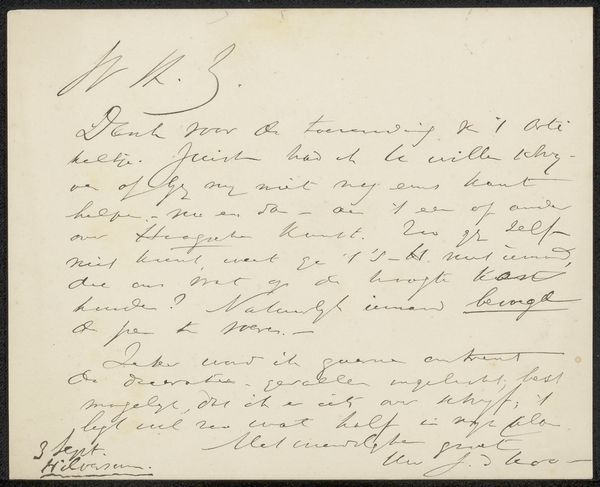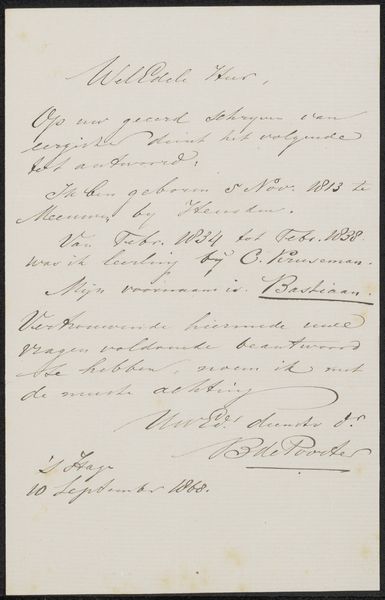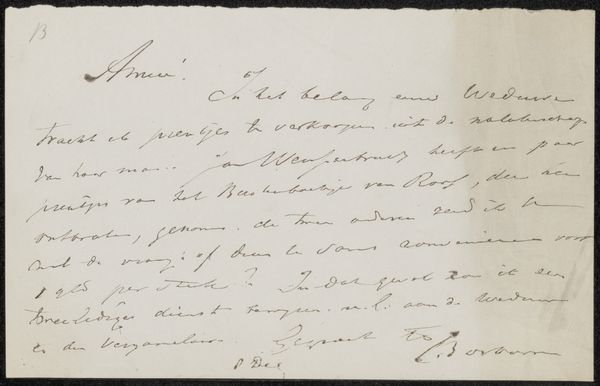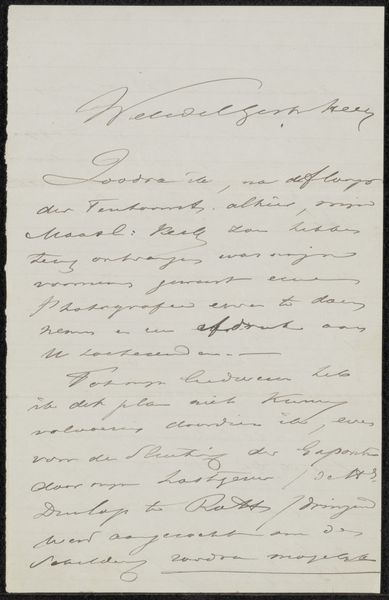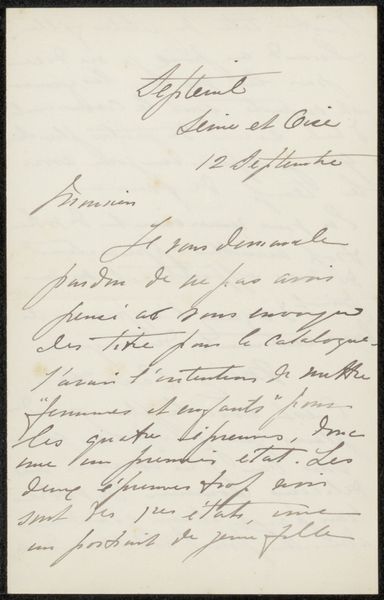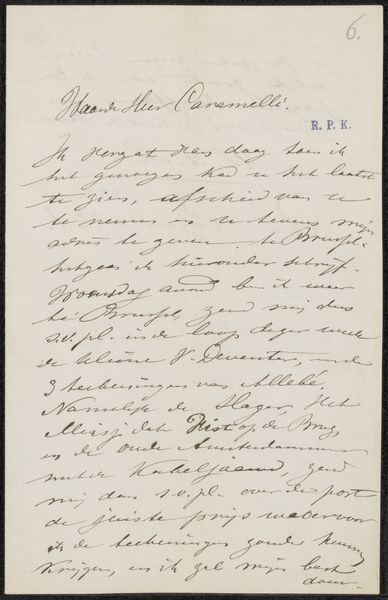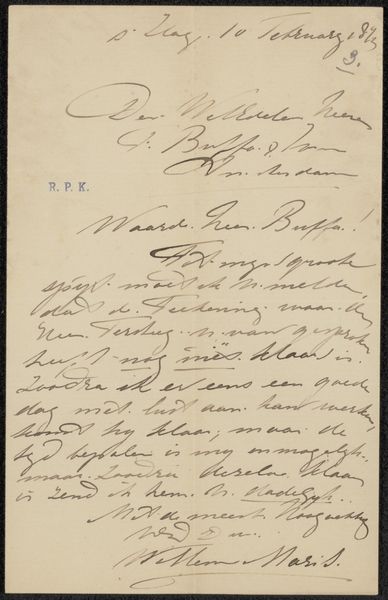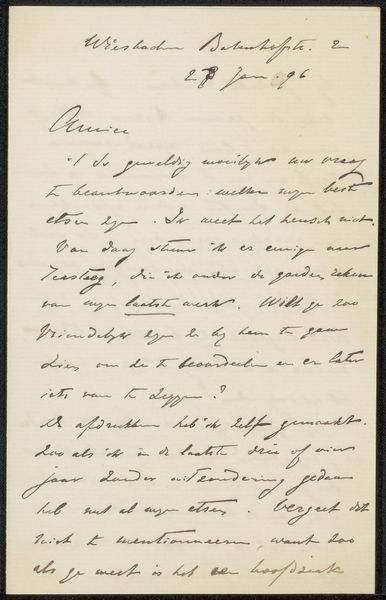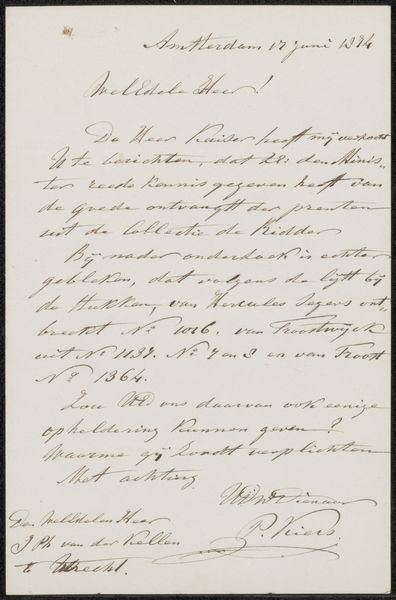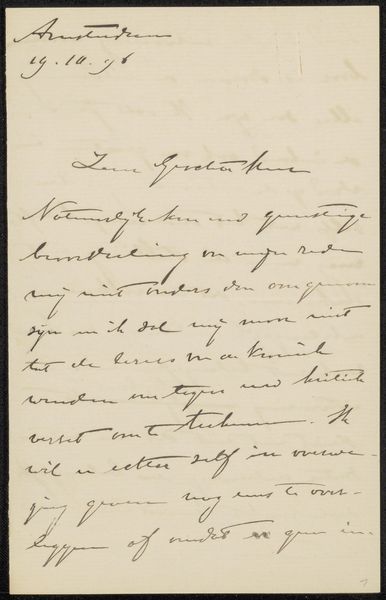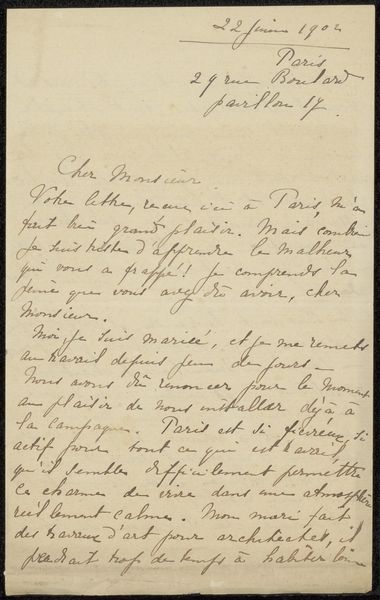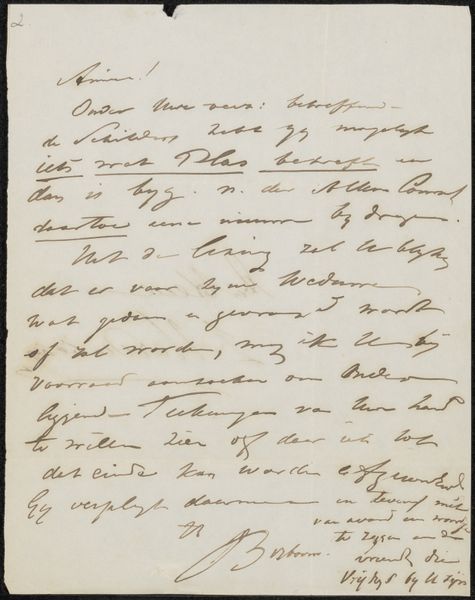
drawing, paper, ink, pen
#
drawing
#
script typography
#
hand-lettering
#
old engraving style
#
hand drawn type
#
hand lettering
#
paper
#
personal sketchbook
#
ink
#
hand-drawn typeface
#
pen-ink sketch
#
pen work
#
pen
#
coloring book page
#
modernism
Copyright: Rijks Museum: Open Domain
Curator: We're looking at "Brief aan Philip Zilcken" – "Letter to Philip Zilcken" – possibly dating from 1905 to 1909. It’s an ink drawing on paper by Johannes de Koo. Editor: It feels intimate, almost like overhearing a private thought. The handwriting is so personal, with the slightly scratchy ink lines on the paper. I’m immediately drawn to that human touch. Curator: Precisely! This work is less about formal artistry and more about capturing the raw essence of communication. Think of it as a cultural artifact, bearing witness to a moment in time. The handwritten script carries layers of meaning beyond just the words. Editor: I'm curious about the labor involved in such a piece. Writing, especially before the typewriter was common, was itself a kind of craft. Each word deliberately formed with pen and ink, a very physical process. It makes you think about the time and effort invested in this brief message. Curator: And what was the purpose of that message? Who was Philip Zilcken? Zilcken was a notable figure in the art world himself, and a peer of De Koo’s; this letter offers us a peek into their exchange and into that fin-de-siècle milieu. The handwriting hints at De Koo’s personality, maybe a touch hurried or deeply absorbed. It invites us to decipher not only the text, but also the implicit meaning behind the words and symbols used. Editor: I wonder, too, about the availability of materials at the time, the quality of the ink and paper and the pen that would have produced these variations of line thickness. That variability emphasizes the texture and history embedded in these humble materials. Curator: Absolutely, materiality shapes meaning. The letter allows us access into a past moment that digital forms of correspondence cannot. In this instance, we get a real sense of de Koo's presence. The visible brushstrokes transform the text from mere information to tangible record of an event. Editor: Looking at it through a materialist lens has given me a newfound respect for the letter, and I see something uniquely affecting in how de Koo’s ideas materialized onto paper. Curator: For me, deciphering those traces and gestures becomes a journey into the artist's mind and the symbols within the cultural landscape of his time. They act as a window into a fleeting moment.
Comments
No comments
Be the first to comment and join the conversation on the ultimate creative platform.
